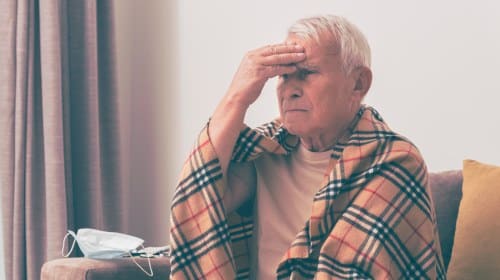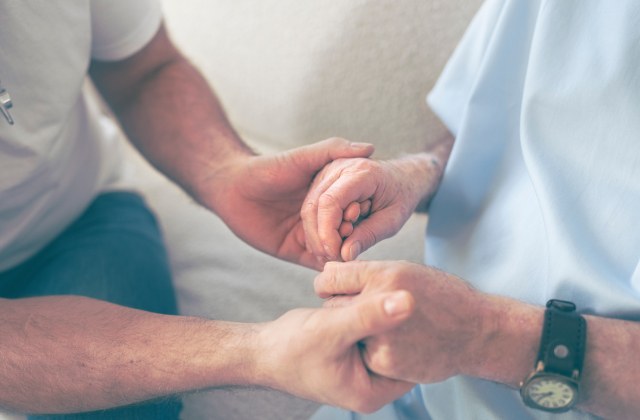Strokes in the Elderly: Understanding the Aftermath and Recovery Process
![]() This article contains medical information that should be reviewed with a doctor before being applied or used.
This article contains medical information that should be reviewed with a doctor before being applied or used.
Strokes stand as a primary source of disability among the aged population, profoundly affecting not only those who suffer from them but also their close associates. The range of post-stroke consequences is extensive, influenced by the stroke’s locale within the brain, its intensity, and the pre-stroke health condition of the individual.
Duration of a Stroke
Strokes unfold when the brain’s blood supply is either hindered or diminished, depriving brain cells of oxygen and nutrients, leading to their rapid demise. Given its emergency nature, immediate medical intervention is key to curtailing brain injury and subsequent complications. The stroke itself may be brief, spanning a few minutes to hours, yet the resultant effects and symptoms might be enduring, even permanent.
Post-Stroke Journey
Navigating the aftermath of a stroke is often a formidable and drawn-out process, potentially extending from several months to years, and for some, it becomes a lifelong path. Recovery varies greatly and is contingent on factors like the stroke’s severity, the specific brain region affected, pre-existing health status, and the promptness of initial medical care.
When strokes affect the brain’s left hemisphere, the impact is notably distinct from that on the right, reflecting each hemisphere’s different roles. Strokes on the left side can lead to right-sided body paralysis, challenges with speech and language, and a generally more cautious and deliberate behavioral approach.

Post-Stroke Symptoms
Post-stroke symptoms might encompass difficulties with speech and comprehension, facial, arm, or leg paralysis or numbness, vision issues, persistent headaches, and mobility challenges. The recovery experience and residual symptoms are highly individualized.
Recognizing Mini Strokes in the Aged
Mini strokes, or transient ischemic attacks (TIAs), are brief interruptions to the brain’s blood supply. They manifest symptoms akin to those of a full stroke but are short-lived, lasting mere minutes or hours. Despite their transitory nature, TIAs are serious warnings of potential full-blown strokes and should not be ignored. Symptoms to be vigilant about include abrupt weakness or numbness, particularly on one side, confusion, speech or comprehension difficulties, and vision problems.
Rehabilitation Pathways
Stroke recovery generally entails a multidisciplinary rehabilitation regime, potentially including physical therapy, occupational therapy, speech therapy, and psychological counseling. The rehabilitation’s objective is to foster as much independence and functional recovery as possible, though it can be a lengthy and demanding process that requires ample determination and support.
Concluding Thoughts
The elderly face a heightened stroke risk with potentially more drastic repercussions. Comprehending the signs and anticipated post-stroke outcomes, along with securing timely and appropriate care, is vital in alleviating the stroke’s long-term effects. Early medical response coupled with thorough rehabilitation is instrumental in maximizing recovery potential. Awareness of stroke risks and indicators is crucial for the elderly and their caregivers, to secure the most favorable prognosis in these critical health occurrences.
Skilled nurses from Angel Care, Inc., a New York home care agency, can provide a high quality of care after a stroke. If you or your loved one needs help in recovering from a stroke, please contact us.

What is a massive stroke? When we speak of a "massive stroke," we are describing a cerebral event that leads to significant neuronal damage.It is important for families, caregivers, and nurses to recognize a stroke in time and provide help as quickly as possible. Common symptoms of a massive stroke. The expression is somewhat nebulous and can vary in its interpretation, but it usually conveys one or more of the following conditions: Extensive Cerebral Impact: A considerable segment of the brain suffers damage, often due to a major obstruction or rupture in a principal brain artery. Intense Symptomatology: The individual may exhibit extreme and acute symptoms, such as considerable loss of muscle control, inability to speak or understand language, and deep-seated cognitive or sensory disruptions. Pronounced Neural Damage: Brain scans, such as MRIs or CT scans, reveal widespread damage to brain tissue as a result of the stroke. Critical Outlook: The prospects for recovery are often grim, with a significant chance of succumbing to the event or sustaining severe, lifelong impairments. Categories of Massive Strokes Massive strokes come in two primary forms— ischemic and hemorrhagic: Ischemic Strokes: These occur when a blood vessel that feeds the brain becomes blocked. They are the predominant type of stroke. Massive ischemic strokes typically happen due to obstruction in a substantial artery, like the middle cerebral artery or the internal carotid artery. Hemorrhagic Strokes: These strokes transpire when a weakened vessel in the brain bursts. The usual culprits are aneurysms and arteriovenous malformations (AVMs). When it comes to massive hemorrhagic strokes, the consequent cerebral swelling and surging intracranial pressure can cause severe neuronal damage swiftly. The Toll of a Massive Stroke The sequelae of a massive stroke can be far-reaching and severe. Those who endure such a stroke might encounter: Grave Motor Deficits: Paralysis, often on one side (hemiplegia), or coordination and balance challenges are common. Language and Communication Deficits: This may manifest as aphasia, which affects speaking, comprehension, and the abilities to read or write. Neurological Impairments: These can include disturbances with memory, concentration, or problem-solving. Emotional Complications: Mood disorders such as depression or anxiety, along with behavioral changes, may arise. Dependence: Survivors of a massive stroke frequently require extensive, long-term care and may not regain their independence. Recovering from massive stroke Addressing a massive stroke involves initial stabilization, acute symptom management, followed by exhaustive rehabilitation. Treatment approaches may encompass: For Ischemic Stroke: Use of thrombolytics to dissolve clots, mechanical thrombectomy to physically remove blockages, and other methods to reestablish cerebral circulation. For Hemorrhagic Stroke: Surgical procedures to mend or remove compromised vessels or alleviate pressure due to accumulated blood. The recovery timeline for a massive stroke depends on individual characteristics such as age, lifestyle, and quality of care received. Recovery from a massive stroke necessitates a holistic and interdisciplinary regimen, typically including physical, occupational, speech therapies, and mental health support. Angel Care home care agency propose a wide range of therapies for elderly. Please contact us if you have a question. The survival rate after a massive stroke can vary widely and is influenced by numerous factors including the type of stroke, the extent of brain damage and rehabilitation services available. While some patients may regain significant function, others may face permanent disabilities. The mortality rate is particularly high in massive hemorrhagic strokes. Immediate medical intervention is crucial. Recognizing stroke symptoms expediently—embodied by the "FAST" mnemonic (Facial drooping, Arm weakness, Speech difficulties, Time to call emergency services)—can be lifesaving. Angel Care, Inc., a New York home care agency, has a team of specialists ready to assist individuals recovering from a stroke. If you or your loved one needs help, please contact us by phone at 917-507-7500 or by e-mail at [email protected].

A good caregiver is more than just a job title; it's a heartfelt commitment to enhancing the lives of those in need. Read the article to learn the ten essential characteristics of a live-in caregiver. You will also learn how to be a good caregiver. Ten Essential Characteristics of a Good Caregiver Empathy If you are thinking about what is a good caregiver trait of a caregiver, empathy is one of them. Caregivers must possess the ability to not only understand their patients but also empathize with their feelings and experiences. This helps create a deeper connection and promotes trust. Patience Providing care for the elderly can be demanding, requiring caregivers to handle various challenges with resilience and understanding. This patience is especially crucial when assisting with tasks that may take longer due to age-related limitations. Flexibility Good caregivers adapt to the changing needs and moods of their patients, offering personalized care. They are open to modifying care plans and schedules to suit evolving requirements. Attentiveness They must keenly observe and listen to their patients, responding promptly to their cues and requirements. This attentiveness ensures that the elderly receive the right care at the right time. Dedication Successful caregivers are those who approach their role with enthusiasm, not shying away from challenges and maintaining a positive outlook. Dedication is what keeps them committed to providing excellent care. Creativity Engaging elderly patients and keeping their minds active necessitates inventive thinking offering a variety of empowering and interesting activities. This creative approach helps in maintaining mental and emotional well-being. Sense of Humor Fostering laughter in challenging situations is a valuable emotional strength and stress reliever for caregivers. A good sense of humor helps in maintaining a positive atmosphere, even during difficult moments. Being Present A good caregiver respects their loved one's current abilities and focuses on being in the moment with them, engaging in activities like reminiscing over photos or enjoying music. Being present also includes creating a safe and comfortable environment for their loved ones. Detail-Oriented Effective caregivers exhibit strong organizational skills, such as creating schedules, preparing for emergencies, and managing information efficiently. Being detail-oriented is essential for managing medication, appointments, and dietary needs. Physical Fitness Caregivers often engage in physically demanding tasks, from assisting with transfers to performing daily activities. While being physically fit is advantageous, knowing how to handle these tasks safely is equally important to prevent injuries. Proper training and techniques are essential to maintain the caregiver's health and safety while caring for their loved ones. So, physical fitness is what to look for in a caregiver. Cultivating the Qualities of a Good Caregiver Obtain Professional Certification Enhancing your caregiving skills significantly begins with enrolling in certified aged care courses. These courses provide comprehensive training and insights into caregiving, equipping you with the knowledge and skills needed to handle a wide range of tasks and cater to every aspect of your patient's needs. Learn Basic First Aid and CPR Given the vulnerability of the patients you may care for, it is essential to be well-versed in basic first aid and CPR. This preparedness ensures that you can respond effectively in the event of emergencies, such as heart attacks, accidental injuries, burns, cuts, or falls, providing immediate assistance and potentially saving lives. Improve Communication Skills Effective communication skills are invaluable for caregivers, whether you are caring for patients with Alzheimer's disease, limited mobility, or social challenges. To excel in this aspect, you must: Be a good listener, paying close attention to your patient's needs. Quickly and effectively interpret a patient's requirements, ensuring they feel understood. Facilitate open and clear communication, making it easy for the patient to express themselves. Provide clear instructions and engage in meaningful conversations with the patient, fostering a strong caregiver-patient relationship. Embrace Compassion Home care environments often involve patients with severe disabilities, which can lead to frustration due to challenges in motor skills, memory, or speech. To maintain a healthy caregiver-patient relationship, it is essential to exercise compassion. Compassion, both for oneself and the patient, helps soften emotions and fosters honest communication, ensuring a more supportive and caring atmosphere in the home care setting. Tips to Hire Caregiver Identify Your Needs So, what makes a good caregiver? He or she is someone who can understand patients’ needs. But before you ask them, you yourself need to determine the needs of your loved one, which is the first step in finding the right in-home caregiver. Consider the level of assistance required, whether it's light housekeeping, daily hygiene, or specialized care for conditions like dementia or Alzheimer's. Seek guidance from a primary care physician to understand the specific needs. When dementia or Alzheimer's is involved, consider a caregiver with additional healthcare training to provide appropriate care, given the potential challenges. Independent Caregiver or Homecare Agency? You have the option to hire an independent caregiver or work with a home care agency. If you need immediate assistance or prefer a convenient match, home care agencies are a viable choice. Independent caregivers, directly hired by you, assist with daily living activities and, in some cases, medical tasks. Rates vary based on skills and experience, providing flexibility and the comfort of a known caregiver. Fair Compensation The cost of hiring an in-home caregiver impacts your budget, but it's an investment in your loved one's safety and well-being. Compensation considerations encompass hours worked, the extent of care, experience, local living costs, Medicare coverage, and tax obligations. Whether you hire independently or through an agency, legal compliance is essential, ensuring tax payment, workers' compensation, and protection from legal issues. Don't Skip the Caregiver Background Check A thorough background check is indispensable when entrusting your loved one's care and home to a caregiver. Detailed background checks are even more critical for in-home caregivers, as they work closely with elderly and vulnerable individuals. Most states offer caregiver background checks through official websites, or you can seek specialized agencies to conduct comprehensive checks. Ensure the examination encompasses criminal history, identity verification, and any adverse reports from law enforcement or the courts. Tips for Caregivers to Get Hired Here are some tips that will help you secure your desired job in the industry. Build a strong resume highlighting relevant caregiving experience. Obtain necessary certifications or training to enhance qualifications. Showcase compassion, patience, and excellent communication skills. Gather strong references from past employers or clients. Consider joining a professional caregiving organization for credibility. Be open to flexible working hours and various care settings. Prepare for interviews by practicing common caregiver interview questions. Present yourself neatly and professionally during interviews. Emphasize your commitment to ensuring the well-being and comfort of care recipients. Highlight any specializations or specific skills that make you an exceptional caregiver. Bottom Line A live-in caregiver embodies not just skills but a profound sense of compassion and dedication. These ten characteristics of a caregiver showcase the qualities that make them invaluable in enhancing the lives of those they serve. When seeking the services of a live-in caregiver, it's these attributes that define excellence in caregiving.



